“It is the destiny of the people of Haiti to SUFFER.”
— Jean-Claude “Baby Doc” Duvalier, US & Israeli-backed Dictator of Haiti
Related Entries
Since the fateful inception of modern Freemasonry on the night of June 24th, 1717, the world has been wracked by an increasingly growing list of bloody and violent revolutions. From America to France, Russia, Japan or Italy; the bloody fingerprints of the conspirators are imprinted all around us. Amongst the constellation of clandestine cliques, esoteric Masonry has perhaps best exemplified the revolutionary antichrist spirit in its millenia-long war against the Logos made flesh. If the last year of my research has lead me to any overarching historical conclusions as an American, it is this: the most important year in the last 400 years of history was not 1776 — it was 1717.
Throughout the better part of the last year and a half of my work, I have cataloged the many banker-funded and occultist led revolts over the past 307 years of the Novus Ordo’s reign of terror. As we will explore once again in this essay, Haiti is yet another country afflicted by the scourge of the Mystery Religion’s acolytes; for the coterie of revolutionaries that helped inspire Haiti’s revolution were more than familiar with the ancient Craft. Including the enigmatic Toussaint L’Ouverture, most if not all of Haiti’s founding fathers were Freemasons and all of Haiti’s presidents have been initiates. L’Ouverture’s right-hand man, General Jean-Jacques Dessalines (future Emperor Jacques I of Haiti) was similarly invested in Masonry. In the National Museum of History in Port-au-Prince, the Emperor’s sword and scabbard — emblazoned with Masonic iconography — can still be seen on display.
Even the very name of the country itself hints at a potential Masonic allusion by its founders: in the Taino tongue, Haiti means “land of high mountains” or “high places”.
— Jean-Claude “Baby Doc” Duvalier exchanging a Masonic Grip with an unknown US general.
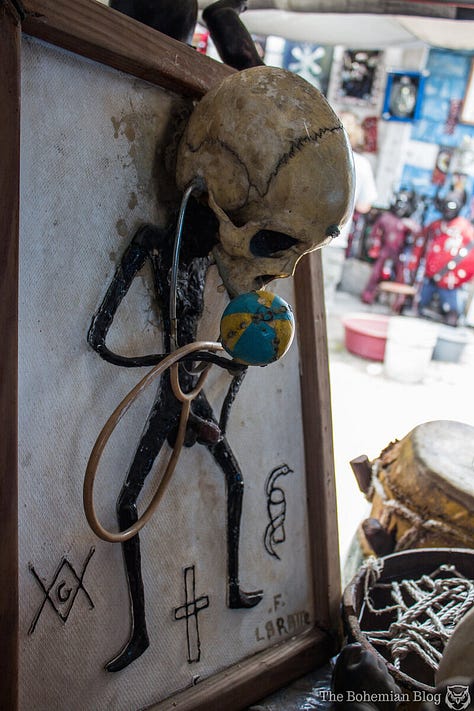
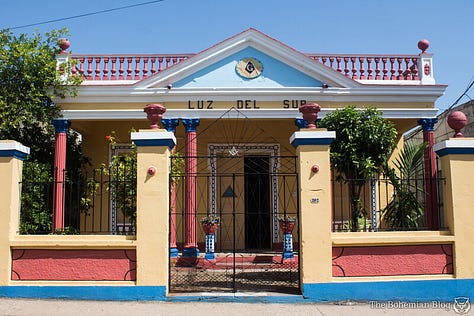
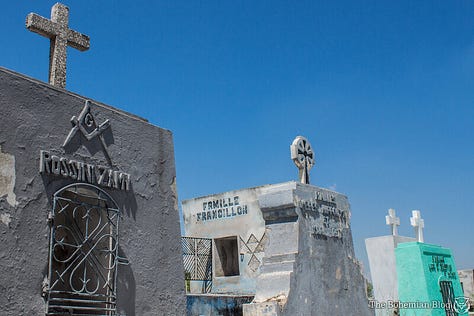
— Masonic symbology is still prevalent within Haiti. Source: Atlas Obscura.
The endemic religion of Haiti has played no small part in this fact. As an inherently adaptive religion, Voodoo has long incorporated Masonic elements since the latter’s introduction in the former French colony (emphasis mine):
Hand gestures and ritual movements in the Asson tradition of Haitian Vodou have been credited with Masonic influence, and significant elements clearly identifiable as being of Masonic origin, comprise parts of the initiation rituals of Quimbisa, a religion of Central African origin in Cuba…
One of Vodou's most iconographic spirits, Baron Samedi, the Lord over the dead in Haitian Vodou, unmistakably combines Masonic regalia with the iconic skull used in the initiatic Chamber of Reflection… and it is far from uncommon for freemasons in Brazil to also be initiates in Umbanda.
— Eoghan Craig Ballard, Ph.D., Grand Master of the Grand Chapter General of the Modern Rite for North America and the Caribbean, Caliban and the Widow's Sons: Some aspects of the Intersections and Interactions between Freemasonry and Afro-Caribbean Religious Praxis
In regards to the penetration of Masonic imagery and occultic practices at all levels of societies, it is hard to think of a country more steeped in the esoteric practices of the Mystery Religion. Recent events in Haiti will further elucidate for us that this land is still heavily ensconced within the murderous grasp of Masonry.
“Vodou, a sort of religious and dancing FREEMASONRY… grouped the slaves into guilds which gradually took the place of the rural police, ruining or enriching as they saw fit the landowners whom they disgraced or protected.”
— Gustave D’Alaux, Revue des Deux Mondes, 15th April 1851
Voodoo was birthed around the end of the 17th-century, first conceived through an unholy union of Catholicism and African paganism. The lucrative French colony of Saint-Domingue was run primarily on the backs of West African slaves. Their tribal religions were outlawed upon their arrival to the island in the late 1600’s, leading to the adoption of Catholic imagery and icons in order to hide in plain sight. Thus, the shapeshifting and occultic religion of Voodoo was born.
Due to its syncretistic nature, Voodoo finds many similarities with Masonry, itself derived from the Mystery cults of Egypt (emphasis mine):
After the demise of high ancient Egyptian civilization, its sacred science did not disappear completely. Fragments of it were disseminated through various channels and formed the basis of what is now called the esoteric or hermetic tradition, composed of strains as various as sufism, gnosticism, kabbalah, Rosicrucianism, Neoplatonism, freemasonry, and alchemy…
…On a strictly historical basis, all the modern esoteric systems, with the notable exception of the Hindu, seem to have been influenced by the Egyptians in both real and imaginary ways.
— Marques Jerard Redd, Ancient Egypt, Sacred Science, and Transatlantic Romanticism
This shared symbolism is a function of both an intentional injection of Masonic mythology into Voodoo as well as their shared roots as esoteric inspired theologies.
— A Masonic voodoo sigil. Note the syncretistic use of these symbols, such as the eight pointed stars at the base of the symbolic keys of Life & Death/St. Peter.
This recursive feedback loop of occultic influence and Masonic ideals would feature itself quite prominently in the lead up to the French & Haitian revolutions (emphasis mine):
…Napoleon‘s participation in freemasonry and intense desire to discover the sources of masonic lore – which he believed lay in ancient Egypt, calling it the “cradle of the science and art of all humanity” served as a stronger motive for his invasion of Egypt than the more prosaic wish to extend his empire.
The revolutionary spirit of the 18th century is usually cited as a major inspiration for Romantic authors, and lurking behind the American, French, and Haitian Revolutions was freemasonry. In her book Modernity Disavowed: Haiti and the Cultures of Slavery in the Age of Revolution, Sibylle Fischer lauds the “emancipatory ideas of freemasonry” and strongly asserts, “Egypt exercised enormous fascination, and Freemasonry in particular – a culture very much at the center of Enlightenment cultural practices – derived its ritual aspects, names, iconography, and so on from Egyptian sources.”
Particularly in revolutionary France, freemasonry explicitly fostered a turn to Egypt. The Isis religion, which had once been the last major opponent of early Christianity, enjoyed another heyday in the French Revolution, recast as the cult of a goddess of reason or of nature, intended to replace Christianity. Concrete speculations were made deriving the name Paris from Isis, and it was believed that the cathedral of Notre Dame was built on the ruins of an earlier Isis temple. The archaeologist and politician Charles-Francois Dupuis... interpreted the cathedral itself as an Iseum. Under Napoleon, Isis would become the tutelary goddess of Paris.
— Marques Jerard Redd, Ancient Egypt, Sacred Science, and Transatlantic Romanticism
Isis bears herself out in the Voodoo pantheon as Erzulie Dantor/Èzili Dantò, the archetypal maternal goddess. Like Semiramis and Isis, Erzulie embodies the so-called “divine” Mother from which life springs forth — the epitome of paganistic devotion to fertility.
— The Black Madonna, an esoteric allusion to the Mother goddess Semiramis/Isis and the “divine” child Tammuz.
Amidst Voodoo’s rites and rituals, echoes of Freemasonry are to be found throughout. Terms like “Grand Master” within the Voodoo mythos reflect a direct parallel to Masonic terminology, one of many. The utilization of passwords, grips, and secret handshakes — often exact copies of Masonic ones — finds expression in the rituals and initiations of the Voodoo religion. Even in ceremonial interactions between competing Voodoo covens, the elaborate Masonic handshakes serve as a testament to the intertwining threads of these spiritual traditions.
Central to Voodoo's cosmology are the Loa, a diverse pantheon of spirits whose portrayals often bears a striking resemblance to Masonic myths. The attribution of Masonic identities to certain Loa — such as Ogou and Papa Legba — reflects a belief in their affiliations with The Craft’s principles. The Loa Agassu, Linglenso, and Agau are also considered Masonic in nature. This symbolism aligns itself intricately: Baron Samedi and other death-associated entities incorporate familiar Masonic motifs like top hats, coffins, and Masonic aprons in their cultural representations.
Voodoo’s syncretistic merging of Christian icons, the Mystery Religion, and African occultism has dangerously blurred the boundaries between the spirit realm and Masonry.
— A Masonic tracing board from Haiti.
“We have no other resource but destruction and flame…
burn and annihilate everything, in order that those who come to reduce us to slavery may have before their eyes the image of HELL which they deserve.”
— Toussaint L’Ouverture, Haitian Revolutionary & Freemason
When we examine the historical context surrounding Freemasonry in Haiti, particularly during the tumultuous period of the late 18th and early 19th centuries, it is impossible to understate the magnitude of its impact upon this unfortunate island nation. In the complex annals of Haitian history, Freemasonry emerges not merely as a fraternity of occulted symbols and arcane rituals. Instead, it reveals itself once again as a clandestine force entwined with power and revolution.
In the context of the prevailing attitudes of the time, the French treatment of their slaves was incredibly progressive. King Louis XIV passed the Code Noir in 1685, outlawing the abuse of slaves within French territory. Standing in stark contrast to much of the attitude’s within the “New World”, freed Blacks' in Haiti were among some of the wealthiest and largest slaveowners on the island. Despite the political rigidity of its social classes, there was a great deal of social intermingling in the Masonic lodges between the affranchis (freedmen) and the White landowners (grands blancs) in the lead up to the revolution. I mention all this to underscore that out of all the European colonies in the Americas, it makes the least sense that Haiti’s revolution would end in the incredibly violent manner it did.
Previously we have covered how this rootless, cosmopolitan fraternity found fertile soil in America, Britain, France, Italy, & Japan. The Craft was no less prolifically spread in Haiti (emphasis mine):
Two Lodges under French control were authorized in 1749. Four others followed in 1763, 1765, 1767 and 1772, and a Provincial Grand Lodge was formed by the Grand Orient of France on October 1, 1778. Six additional Lodges chartered by the French were set at work in 1774, 1775, 1779, 1783, 1784 and 1785.
The Grand Lodge of Pennsylvania granted a Charter for a Lodge in 1786 at Cape Francois, and another Warrant to a Lodge at Port au Prince in 1789.
A Dispensation was issued for a six-months' period by the Grand Lodge of New York on December 4, 1793, to brethren "driven from the Island of Santo Domingo" that they might meet in New York City. John G. Barker's Early History of the Grand Lodge of the State of New York says that the Provincial Grand Master of Santo Domingo and four of his Grand Lodge Officers were among these exiles during the Haitian Revolution.
Several other Lodges, nine in all, were instituted by the Grand Lodge of Pennsylvania from 1786 to 1803. Some French Lodges were revived in 1806…— Albert G. Mackey (33°) & William J. Hughan, History of Freemasonry
A critical aspect gone unmentioned by the storied Masonic historian Mackey is the role that traveling and informal Lodges had in the initial spread of this esoteric theology. What is clear however, from Masonry’s own texts no less, is that in the decades leading up to the Jacobin reign of terror in France, its Grand Lodge was seeding the island nation with its cancerous covens.
Within this simmering cauldron of violence, the proliferation of Masonic lodges in French controlled Saint-Domingue becomes a familiar fact pattern. While some Masons fled in the midst of Haiti’s bloody revolt, there were still many formal lodges instituted in Haiti during this time period by the Grand Lodge of Pennsylvania (led by Jonathan Bayard Smith). More than just an intellectual or ideological inspiration, the Grand Lodges of America and Europe would serve pivotal roles in fomenting and coordinating Haiti’s incipient slave revolt. In the ever shifting realm of international politics, one where alliances are forged in the darkness of hidden holds, Masonry serves as an indispensable weapon in the arsenal of the Mystery Religion.
— Toussaint L’Overture, ill. by Unknown.
Toussaint L’Ouverture, the bloodsoaked liberator of Haiti, embodies the enigma of the Masonic pawn. Before his arrival on the stage of world politics, scarcely little is known about the man. His family lineage is uncertain, but he is rumored to have descended from West African nobility. In the year 1776, Toussaint bought his freedom at the age of 33. With no military training and no schooling, he went on to become one of the most successful guerrilla commanders in history, or so we have been told. Given the incredulous claim of L’Ouverture becoming a military mastermind at 53 — with no formal training, mind you — it is more than fair to question how much of his mythos has been built up while unnamed or unseen advisors truly pulled the strings.
The echoes of Masonry’s influence on the regime of Toussaint and his allies still linger, their hollow promises of freedom overshadowed by a reign of terror against those who dared oppose their iron grip. While L’Ouverture (or his ghost writer) penned polemics against the White colonists, his affiliations with the grand blancs via Masonry go back to before his slave revolt began (emphasis mine):
The four dots enclosed by the last extravagant loop of the signature which Toussaint deployed for the first time in his proclamation from Camp Turel indicate that he was a Freemason, and of a very high degree; all his subsequent signatures also include this symbol. Toussaint's name is not to be found in the membership list of any Masonic lodge; yet those lists do include the names of many of his proteges — men who were officers in his army and would figure prominently in future governments of Haiti, not only his brother Paul Louverture and his nephew Charles Belair but also many white men who were close to him. The implication is that the ever-secretive Toussaint occluded his own name from the membership rolls while discreetly using the Masonic temple structure to reinforce the position of his closest associates — whose presence there strongly suggests that Toussaint’s sponsorship was very influential.
…Toussaint's membership in the organization would have furnished him a relationship — on exceptionally equal terms — with some of the most powerful white men in the colony. Via this network, he and other leaders of the first insurrection are supposed to have been in contact with significant figures among the grands blancs before the great rising of the slaves in August 1791.
— Madison Smartt Bell, Toussaint Louverture: A Biography
Behind the facade of liberation lay a shadowy realm where Masonic affiliations served as an unseen currency of influence, weaving a tapestry of alliances that invariably fueled Toussaint's ascent to power.
Despite styling himself as a “Black Napoleon” or Spartacus reborn, his treatment of his men was just as tyrannical and violent as the taskmasters he was attempting to overthrow. His mastery of Masonic subterfuge, as hinted by the cryptic symbols adorning his signature, says more than enough about a man who helped plunge Haiti into an orgy of racially-fueled bloodshed. Given his hidden ties and hypocritical actions, Toussaint L’Ouverture emerges not merely as a “liberator”; but rather, as a pawn shrouded in the dark allure of Masonic intrigue.
“We won’t lie to people, saying we have a peaceful revolution. We do not have a peaceful revolution.
We are starting a BLOODY revolution in the country."
— Jimmy “Barbeque” Chérizier
This brings us to the next pawn in this grand and gory chess game: Jimmy “Barbeque” Chérizier.
Chérizier was an officer in the Departmental Units for the Maintenance of Order (UDMO), a police unit known for its brutality and heavy handed tactics. This elite paramilitary unit was, and still is, funded by the US State Department (i.e. DHS); part of an overall aid package to Haiti since 2010 that now totals over $5.1 billion USD. The former police officer turned warlord earned the nickname “Barbeque” after incinerating numerous victims in kerosene-fueled pyres while still with the UDMO. According to reports, the weapons, vehicles, and uniforms that Chérizier used to stage these massacres came from “top officials” within the government of deceased President Jovenel Moïse. After these extrajudicial killings in 2018, Chérizier was fired and a warrant was issued for his arrest.
In 2020, he was deemed a human rights abuser by the U.S. Treasury Department for his gang related activities, with his crime spree only worsening since then. On March 2nd-3rd of 2024, Jimmy BBQ claimed credit for orchestrating the largest jailbreak in Haitian history, with nearly 5,000 inmates escaping to wreak havoc upon the citizens of Haiti. Haitian officials have described the capital city as a “warzone”, with criminal forces augmented by escaped convicts totally overwhelming police forces. Upwards of 80% of the capital city of Port-au-Prince is now directly controlled by violent thugs.
Despite being Public Enemy #1, Jimmy BBQ continues to elude capture by government and police forces. Guess they should have just asked the producers at Al-Jazeera, Vice, Reuters, Sky News, The New Yorker, the Associated Press, CNN, NBC, or random Tik-Tokkers that keep snagging interviews with this extraordinarily talkative and photogenic fellow. As you can see documented quote prolifically within the media and throughout the years, this cartoonish killer right out of central casting openly flaunts his Masonic affiliations for the world to see. Those same occultic affiliations certainly help explain how Chérizier continued to maintain his friendly ties with high ranking government officials despite his status as a gangland general.
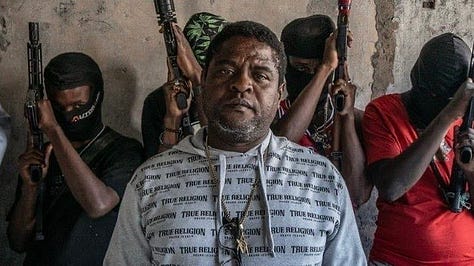
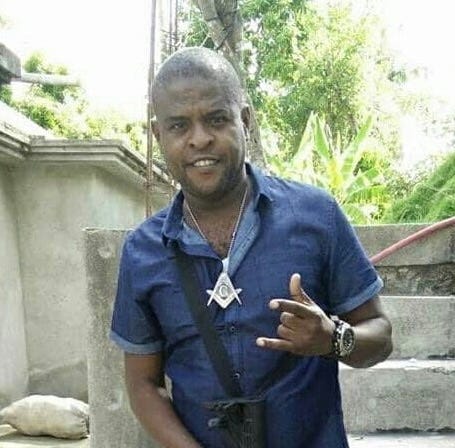
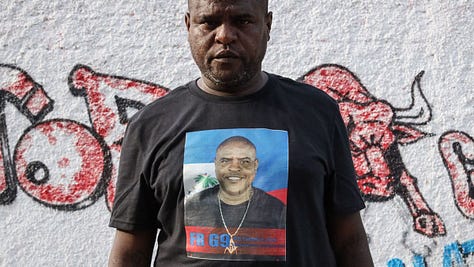
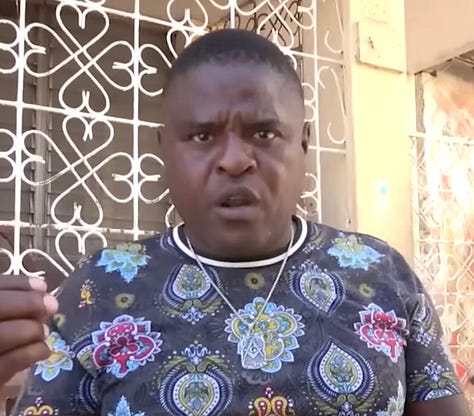
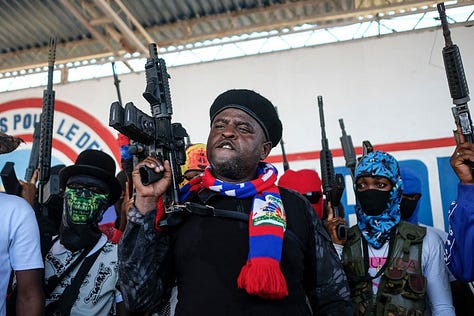

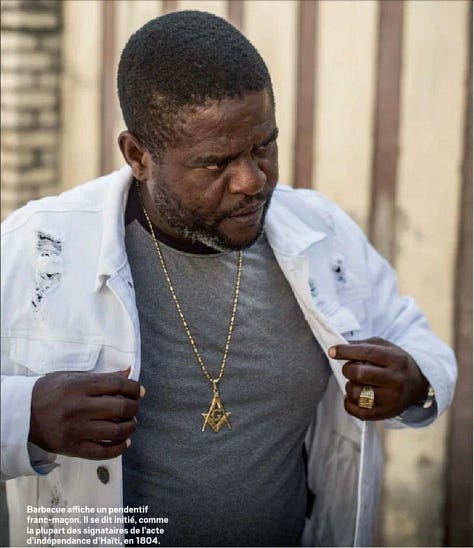

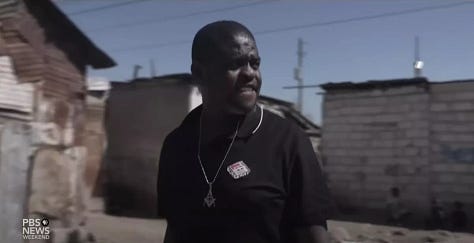
— Jimmy “Barbeque” Chérizier throughout the years: the latest Masonic pawn to terrorize Haiti.
Chérizier’s erstwhile ally, President Moïse, was assassinated under incredibly dubious circumstances in 2021. After hired assassins penetrated the Presidential Palace and killed Moïse, they were quickly apprehended by Haitian authorities before their extraditions to the US. In court filings, the US prosecutor then petitioned the judge to designate a “Classified Information Security Officer” for the case involving Mario Palacios, a former Colombian soldier apprehended following the successful hit. The former head of operations for the DEA in the Caribbean, Mike Vigil, said “the government is pretty much telegraphing CIA involvement” with this move. As if that wasn’t damning enough, the DEA also confirmed that at least one of the 28 hitmen was a confidential source, hired through Florida-based security firm CTU Security.
Chérizier has claimed this was a hit orchestrated by police and regime forces, using the killing of his friend as a casus belli for his bid to become Papa Doc 2.0.
Consider perhaps that this execution has more to do with President Moïse refusing the COVID bioweapons in his country the month before his violent demise by a CIA linked hit-squad.
“Haiti is closer to ANARCHY than it is to anything else.”
— Michèle Montas, Journalist & UN Spokesperson
In the aftermath of Haiti's Masoniclly led genocide of its White and mixed race settlers, a new form of enslavement emerged. It did not come through chains and plantations this time, but rather through financial manipulation by powerful international banking interests. Haiti’s economic indemnities epitomizes this insidious method of control, revealing how powerful bankers have conspired to cripple Haiti's economic sovereignty, perpetuating a cycle of dependency that continues to this day.
The roots of Haiti’s independence debt trace back to the early 19th century shortly after the Carribean nation secured its independence from French rule. However, this bloodsoaked freedom was quickly overshadowed by financial burdens imposed by France. In 1825, under the threat of reoccupation and international embargoes, Haiti was coerced into agreeing to pay an indemnity of 150 million gold francs in exchange for diplomatic recognition. This enormous sum, equivalent to tens of billions in today's currency, was a crippling blow to Haiti's nascent economy.
The mechanics of this indemnity scheme was largely orchestrated by European bankers and politicians. Through complex financial arrangements and usurious loans (upwards of 40% interest and fees), these bankers effectively enslaved Haiti into debt servitude, creating a cycle of dependency that still plagues the nation. Moreover, the political and military pressure exerted by powerful nations such as the United States further compounded Haiti's predicament, forcing it into agreements that favored foreign interests and supranational corporations over Haitian concerns.
While it took longer than other nations we have discussed, Haiti was also coerced into creating their central bank. Faced with crippling debts and abject economic turmoil, the leaders of Haiti capitulated in order to receive concessions on their indemnities. Founded in Paris in 1881, the National Bank of Haiti would maintain its monopoly on the issuance of currency until the National Bank of the Republic of Haiti replaced it in 1910. That bank would also be founded in Paris, remaining in the city for nearly 70 years.
— Pawns In High Places, digital art, 2024.
The Third Masonic Revolution, i.e. the French Revolution, served as far more than an intellectual inspiration for Haiti’s bloody slave revolt. As we continue to dissect the tangled web of Masonic influence, a recurring motif emerges once more. It is one where Masonic grips and hidden allegiances inevitably leads to mass slaughter and financial slavery. The history of Haiti is drenched in the blood of revolutionaries and victims alike, standing as a stark testament to the nefarious machinations of this rootless band of highwaymen and conjurers.
The symbiotic relationship between Freemasonry and Voodoo hints at manipulation on a truly grand and spiritual scale. The echoes of ancient Egypt, the veiled references to pagan deities — all serve as threads woven into a fabric of control, binding nations and souls alike. The disastrous impact that such poisonous spiritual deceptions can do to a land can scarcely be reckoned, but I believe Haiti serves as a prime example of it.
Looking forward, one can only shudder at the potential ramifications of unchecked Masonic terror in Haiti once more: its impacts can already be seen. The rise of warlords like Jimmy "Barbeque" Chérizier — openly flaunting his Masonic affiliations — mirrors the historical manipulation of the past. The ongoing entanglement of international banking interests echoes the economic enslavement witnessed many times before (naturally, Haiti’s CBDC was rolled out in 2022). As we compare the past to the present, the parallels are surely chilling.
As this chapter draws to a close, the shadows cast by Freemasonry loom ominously over the pages of our history books. The rise of puppet leaders like Toussaint L’Ouverture serves as a cautionary tale while we chaff under the chains of our own financial bondage: our illusory freedom is built on phantasmal promises while their true power resides in the shadowy halls of the Lodge. L’Ouverture, falsely hailed as a “freedom fighter”, instead becomes one in a long line of tyrannical tools wielded by Judeomasonry.
After Haitians threw off the physical bonds of slavery, the banking cartel replaced them with the invisible chains of financial servitude.
Ever since the birth pangs of modern Freemasonry ceased in 1717, its insidious tendrils have wrapped itself around the world, ensnaring our nations in her perfidious plots and deadly deceptions.
“It appears incredible that sorcery, poisonings for a fee by recognised poisoners, and cannibalism, should continue to pervade the island.
The truth is, that except during one year of Geffrard's Presidency, no Government has ever cared resolutely to grapple with the EVIL.”
— Spenser Buckingham St. John, Hayti or The Black Republic





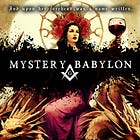
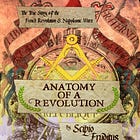
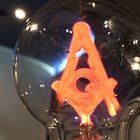


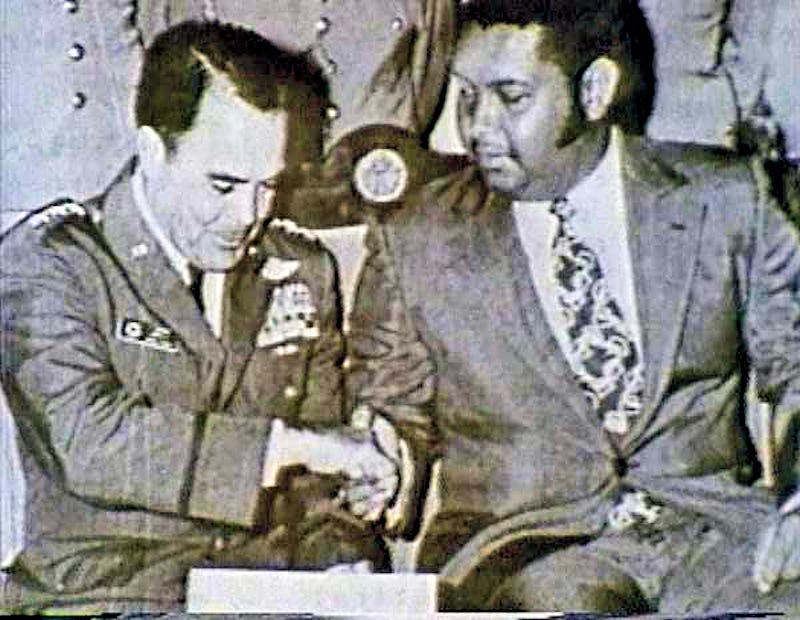
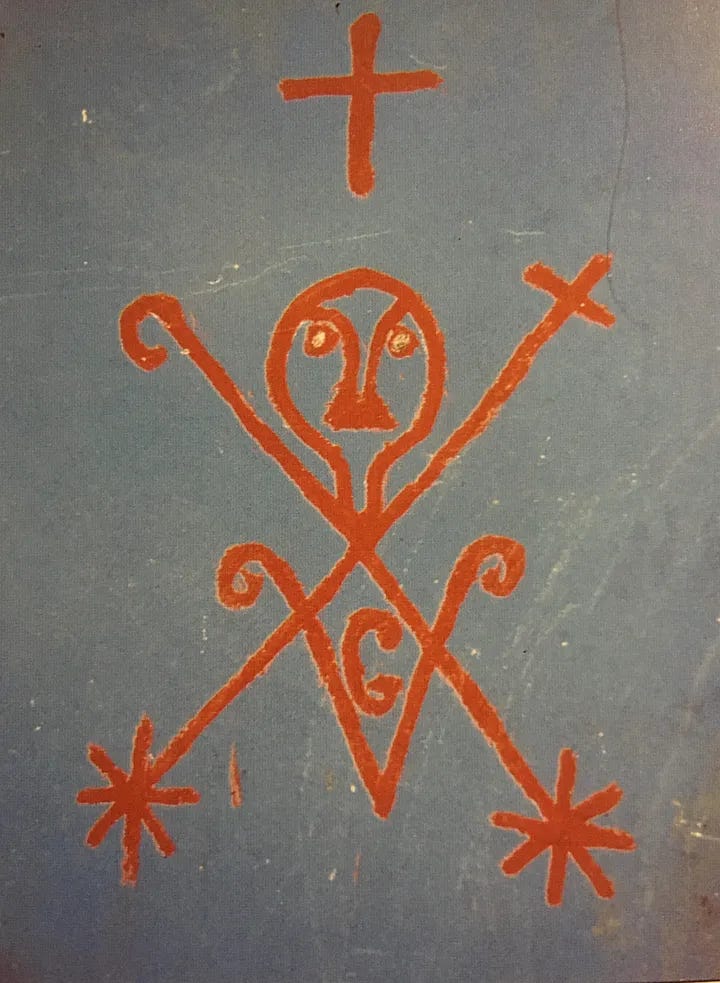
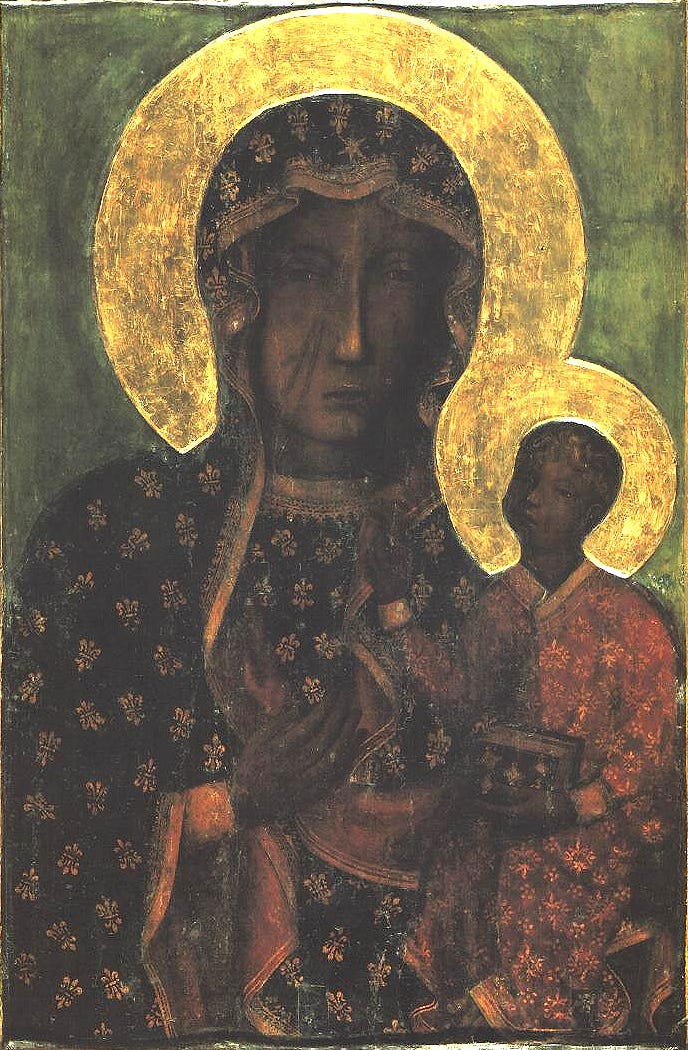
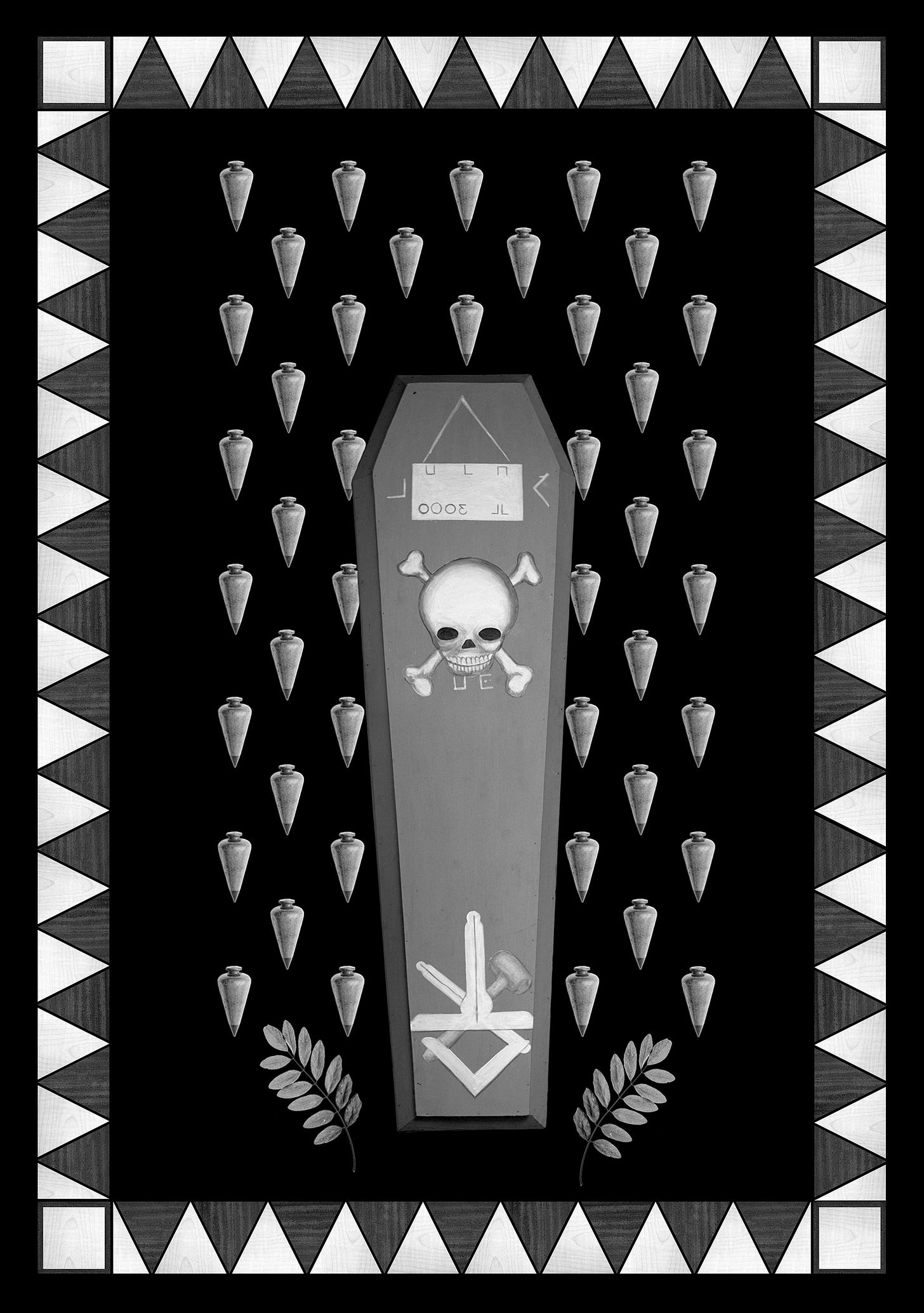
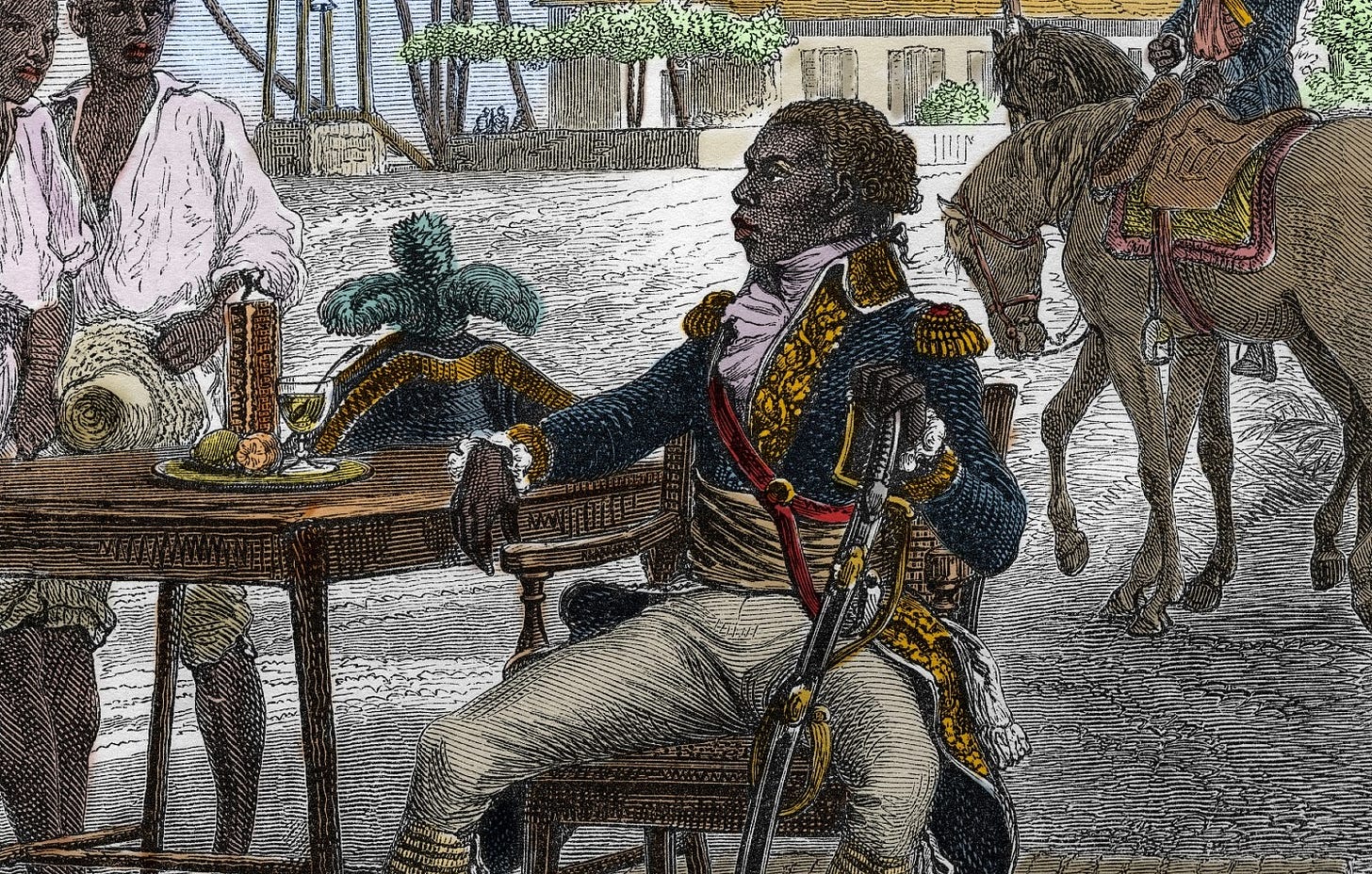
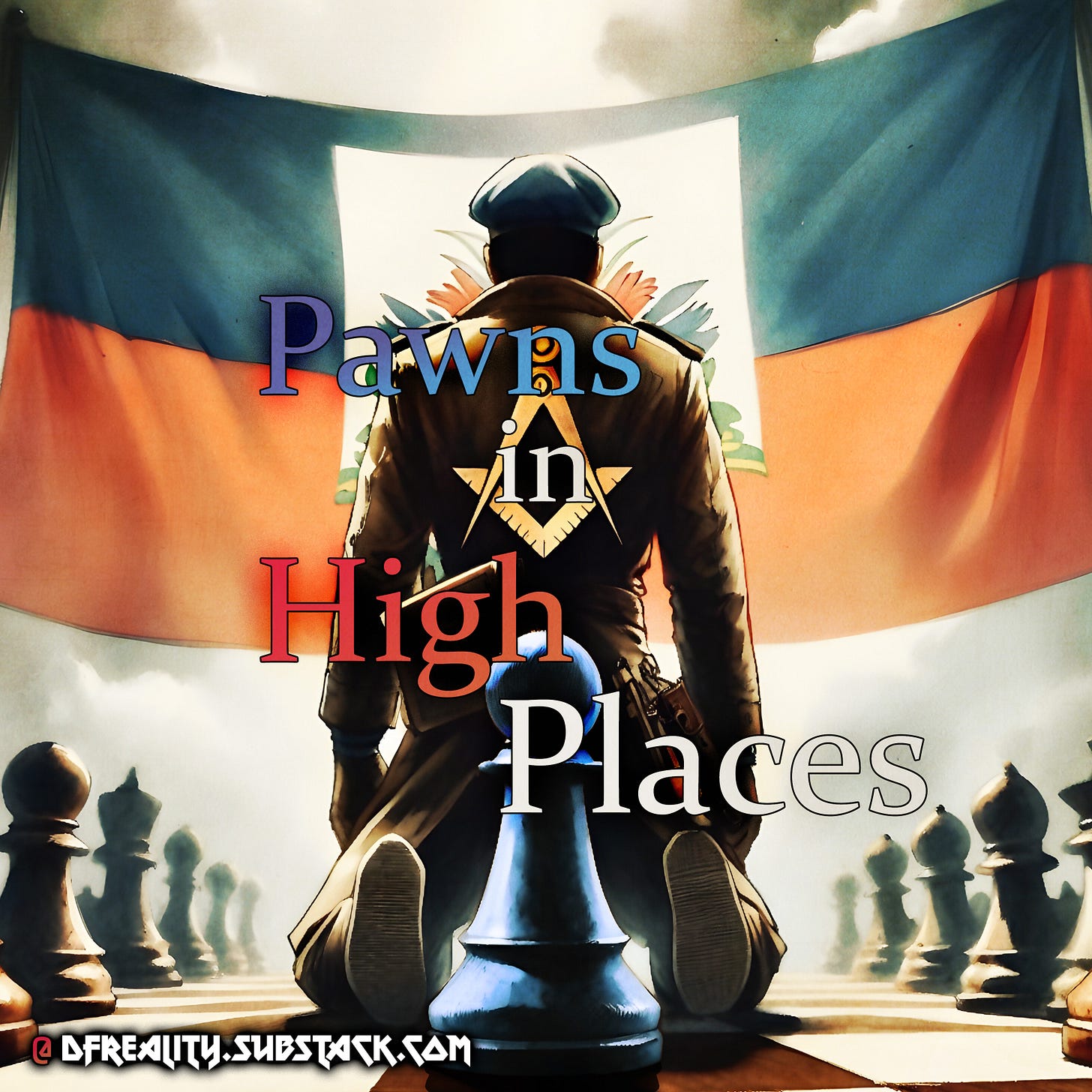
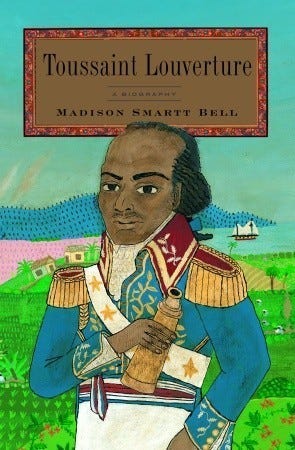
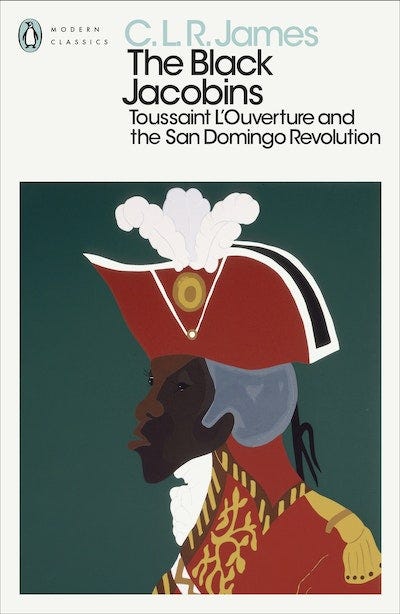

We may be at the start of some big trouble if this history is a harbinger of what demographic movements into the US southern border will bring.
very interesting information. and now we are the destination for the Haitian immigrants, doesn’t look good.
was thinking about the 2019 Notre Dame Cathedral fire if it was really accidental, fascinating that it might have been built over an ancient Isis temple (& “Paris”)